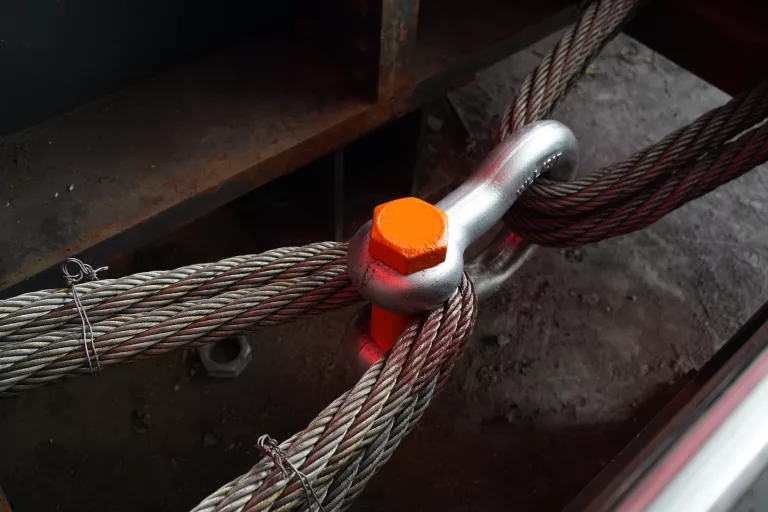Shackles play a crucial role in various industries, serving as a fundamental component in rigging applications. Whether used in construction, maritime, or other heavy-duty operations, understanding the ultimate load of shackles is paramount to ensuring safety and reliability. In this article, we delve into the concept of ultimate load, its significance, and the factors influencing the ultimate load capacity of shackles. US type (G209 shackle, G210 shackle, G2130 shackle, G2150 shackle)shackle’s ultimate load is 4-6 times of the WILL, let’s see what is ultimate load.
The Basics of Shackles
Shackles are widely employed in lifting and rigging scenarios to connect, secure, and lift heavy loads. They come in various designs, including bow shackles and dee shackles, each tailored for specific applications. Despite their differences, all shackles share a common characteristic: the ultimate load, which defines their maximum safe working capacity.
Defining Ultimate Load
The ultimate load of a shackle refers to the maximum force it can withstand before failure. It is a crucial parameter in determining the shackle’s capacity and, consequently, its safe application in lifting and rigging operations. Ultimate load is expressed in terms of force, typically in pounds or kilograms.
Factors Influencing Ultimate Load
Several factors influence the ultimate load capacity of shackles, and understanding these variables is essential for ensuring safe and efficient use:
- Material Composition:
The material from which a shackle is made greatly affects its ultimate load capacity. Common materials include carbon steel and alloy steel, each offering distinct strengths and durability. Engineers carefully select materials based on the specific requirements of the application.
- Design and Type:
Different shackle designs and types, such as bow shackles, dee shackles, and screw pin shackles, exhibit varying ultimate load capacities. Engineers consider the intended use and load distribution when selecting the appropriate shackle type for a particular task.
- Manufacturing Standards:
Shackles are subject to industry standards and regulations that dictate their design, manufacturing processes, and testing procedures. Compliance with these standards ensures that shackles meet specific safety and performance criteria, including ultimate load requirements.
- Load Angle:
The angle at which a load is applied to a shackle significantly influences its ultimate load capacity. Manufacturers provide load angle charts to help users determine the correct capacity based on the angle at which the load is applied.
- Temperature and Environmental Factors:
Extreme temperatures and harsh environmental conditions can impact the performance of shackles. Manufacturers often provide guidelines regarding the temperature range within which a shackle can safely operate.
Conclusion
Understanding the ultimate load of shackles is fundamental to promoting safety and efficiency in lifting and rigging operations. By considering material composition, design, manufacturing standards, load angles, and environmental factors, users can make informed decisions and mitigate the risks associated with overloading shackles. Rigorous adherence to safety protocols and regular equipment inspections are crucial elements in maintaining a secure and reliable rigging environment.If you want to know more about ultimate load of shackles, feel free to contact Sail Rigging now.





